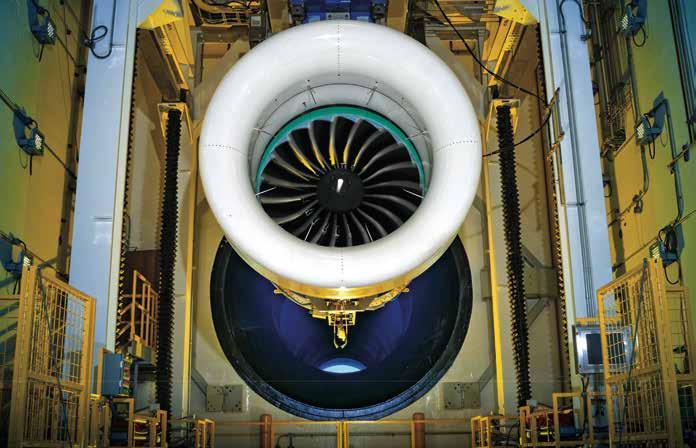Commercial engines 2021
MRO revenues nosedived in 2020 as many aircraft went into storage
So, what next? And what are the recovery scenarios and strategic moves likely to be seen in the sector? The most obvious impact is that for an industry that has stalled, there will be surplus capacity and some MRO players will either fail or downsize. “Airlines may face some challenges in terms of disruption of supply as the supplier base in certain markets or geographies comes under strain,” believes Stewart. AJW, which carries a hefty parts inventory worth $500 million, has dipped to 65% of its pre-pandemic revenue base, but has restructured and lent heavily on its diversified portfolio in addition to airline clients to weather the storm. “There will be a culling of people in our business that don’t have contracted services, military or cargo business,” says Whiteside. Those that survive will be keener than ever to do whatever it takes to win. “We have been even more engaged with our customer base as a partner through the crisis – it’s all about avoiding unnecessary spending,” says Martin Friis-Petersen, senior vice-president
35% Pandemic-driven fall in revenue recorded at global parts and repair specialist AJW
MRO programmes at MTU Aero Engines. Strong, credit-worthy airlines have found suppliers willing to entertain flexible payment terms, discounts on shop visits and help to use so-called “green time” engines – powerplants with life left on the clock. Higher-risk carriers will not always be offered such flexible terms. Airlines have been outsourcing their MRO services for years, and this trend may accelerate again. The goal is to move from high fixed costs, such as in-house MRO entities, to a more variable cost base. “Boardrooms will once again be asking the question: why do we want the infrastructure?”, says Stewart. It may be attractive for some to look at partial disposals of their MRO assets as a mechanism to raise capital. A sale of a 30-40% stake in an airline MRO would be an attractive prospect for private 18 FlightGlobal
equity, a sovereign wealth fund or pension fund seeking a secure income stream, while the airline retains operational control. For Airbus and Boeing, there may be a requirement to temper aftermarket ambitions as they digest bigger issues for now. “There is a need to refocus on the core business and return to a steady state. And there is the fact that the services business is even more competitive than ever because everyone is fighting for survival,” says Yann Cambier, aviation principal at ICF. While the desire to capture more aftermarket business will remain, the trend could be away from capital-intensive services and to higher-margin activities such as data services, around predictive maintenance, or via acquisitions of specialist service providers. Alternative spares The expected increase in retirements, aircraft part-outs and availability of green engines for some years ahead has ramifications for supply and demand across the whole services ecosystem. Manufacturers of non-OEM spare parts, which airlines can favour as they are cheaper than those bought from the original manufacturer, should be well placed, as well as companies specialising in parts repair. MTU works in some of these areas, in addition to offering used serviceable material (USM) and greentime engines, and in-house parts repair. “The wave of retirements expected from mid-2020 has not materialised, but it will come,” says Friis-Petersen. “We will be an active player where we see value.” A disrupted industry brings opportunities, and the environment is ripe for mergers, acquisitions and consolidation. Cambier says that with excess MRO supply “ICF expects that investors may buy some suppliers with weak cash positions”. Stewart agrees: “There are private equity investors that are looking for a good deal in a market that has long-term growth prospects.” There is plenty of interest, he says, particularly in players that deal in end-oflife services, asset management and USM. How the aftermarket develops in the coming years is entirely dependent on the pace and shape of the traffic recovery. A snap back to previous growth patterns could see the aftermarket arena emerge battered and bruised but fundamentally unaltered. Analysts are cautious about predicting wholesale changes just yet, but the underlying feeling is that some business models have changed for good. w
The great engine race For aviation to achieve zero or near-zero carbon emissions in the coming decades, an entirely new suite of propulsion technologies is critical. The big manufacturers say they are up to the challenge FlightGlobal 19
Pratt & Whitney
Niklas Prescher/Shutterstock
Commercial engines 2021


